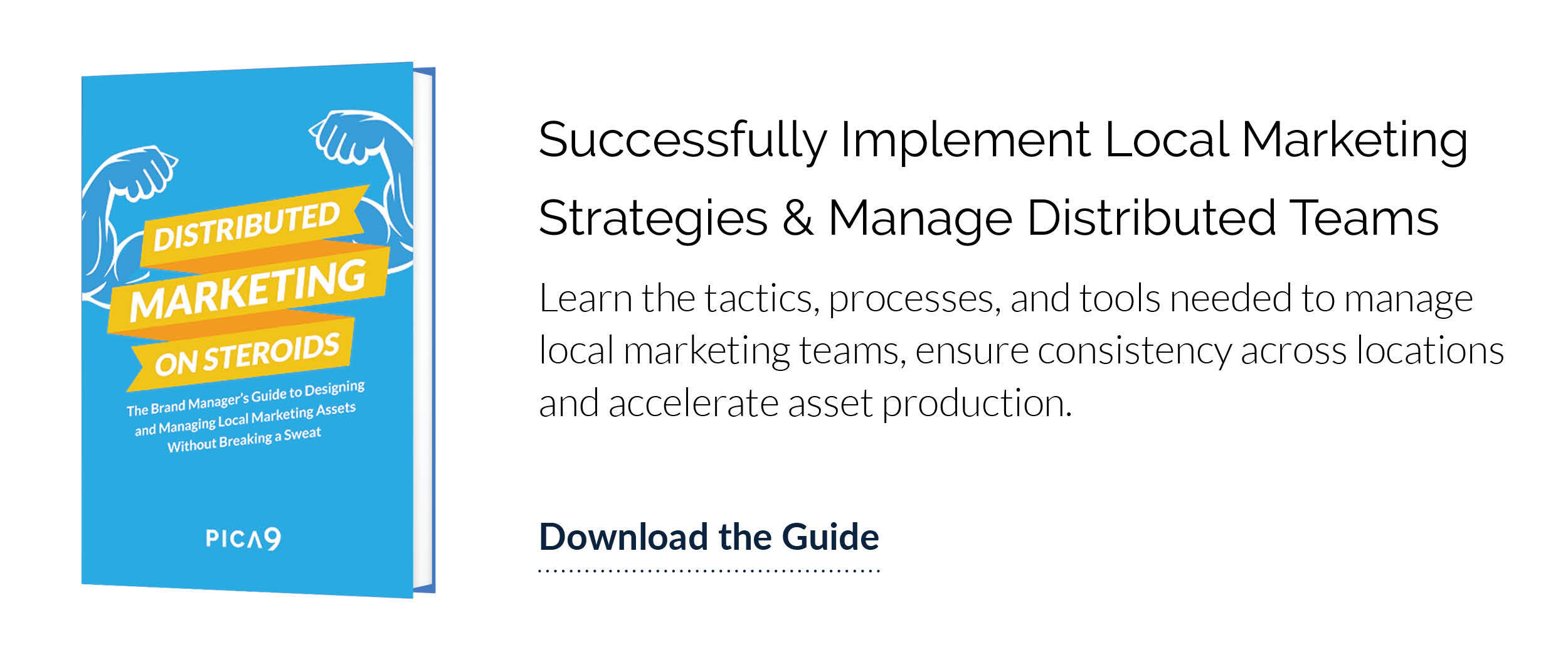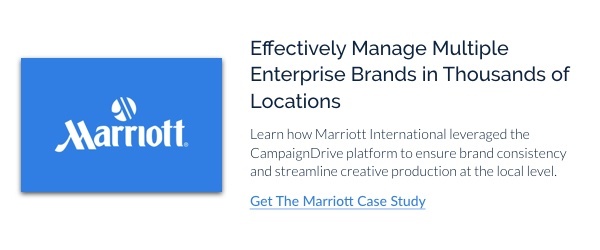If you place a Pizza Hut order in Korea, you can order a bulgogi pizza. Canadians have access to poutine or maple bacon pizzas. Hong Kong residents may get a pizza topped with hot dogs. These global variations in menu offerings don’t detract from the Pizza Hut brand. Instead, they're a form of localization, a tool for building global sales and brand loyalty around cultural variations.
Global enterprise brands (multi-national organizations with billions in annual revenue) are realizing the importance of local marketing more than ever before. A recent study revealed that enterprises like Coca-Cola and McDonald's are among many global companies choosing to shift away from a homogeneous international strategy in response to customer needs.
“Customers [have] stopped feeling a connection with the generic products and communications,” write researchers Luigi Dumitrescu and Simona Vinerean in The Glocal Strategy of Global Brands. Forget globalization. A single marketing strategy for a global audience is too generic, or impersonal, to make much of an impression. Customers now demand relevant marketing – and that's why today’s brands are thinking “glocal” (a portmanteau of global and local) when it comes to marketing.
Building Customer Connections Through Local Marketing
Coca-Cola’s decision to move towards a “glocal” marketing strategy is one informed by knowledge of changing consumer preferences. Today, 80% of consumers say that “authenticity of content” is the most important factor in how they value a brand’s marketing.¹ If you consider the fact that your marketing is a key factor in how your brand humanizes itself and relates to customers, the authenticity of your localization attempt is a key success factor for your brand as a whole.
Local Authenticity: The Right Way and The Wrong Way
Several years ago, Starbucks launched Seattle’s 15th Avenue Coffee and Tea, a coffee shop that was designed to look like a small, indie coffee shop with a quirky vibe. The grand opening was met with ridicule and protesters, and the shop closed before its 2nd anniversary. This marketing mistake infuriated many Seattle locals because it felt inauthentic. This was a major, global brand trying to seem like a boutique shop with local roots. Needless to say, that doesn't go over well with customers.
On the other hand, when McDonald’s wanted to branch out into China, winning the hearts of Chinese customers required making rice a key component of the regional menu.² This localization factor doesn’t detract from McDonald’s international brand commitment to customers who are “Lovin’ It.” Instead, the wildly successful decision is perceived as an authentic nod to local preferences, and enhances the brand's appeal. Instead of pretending to be something it's not, McDonald's decided to adjust its approach while staying true to the things that made it world-renowned in the first place.
A Local Presence Supports Localization
There’s no shortage of stories of brands who were "lost in translation." In 1980, KFC’s own launch in China was accompanied by a mistranslated slogan on their storefront signage.³ The brand tagline "Finger-lickin' good" had been mistranslated into the somewhat less-appealing "Eat your fingers off." While KFC recovered, it’s a misstep that could have been avoided if the brand had just had more of a local marketing presence at the time.
Enterprise brands don’t need individual field marketing representatives for every single one of their locations worldwide. However, they do need a way to capture local knowledge if they want to avoid the risk of using storefront signage about eating habits involving self-mutilation. The enterprises that do the best at local execution often rely on a local network of distributors, dealers, agents and agencies to bring that innate knowledge of the local market.
Individuals who interact with your local customers on a daily basis won’t just help you avoid translation faux-pas, they can also inform you about the nuances of local tastes, preferences and culture that improve business outcomes. When a brand nails these nuances, they’ve created relevant marketing that resonates with local customers and can drive sales exponentially.
The New Consumer Expects a Personal Brand Relationship
Consumer behavior has changed drastically with adoption of digital technologies. Mark Davies of PA Consulting has described as “customer 4.0.” He writes that, “we’re now in a world that’s led by customers who are increasingly outcome-driven. [Success is] positioning yourself into the customer’s universe, being there when they need you, and getting out of the way when they don’t.”[4]
Customers expect one-on-one interactions with brands in a way that wasn’t possible 20 years ago. Before almost everyone owned a smartphone, it wasn’t possible to compare flight prices across seven different airlines at 3 a.m. in 30 seconds. Enterprises that are capturing loyalty with customer 4.0 are using advanced analytics applications to aggregate data on customer behaviors, power digital campaigns, and understand customer segments at ever deeper levels.
When Big Data Isn't Personal Enough for Customer 4.0
While brands may know through demographic and behavioral analysis that most of their 30 year-old male customers prefer the color red, do they really understand those customers better? 63 percent of customers feel they’re misunderstood by brands. [5] Just think about that for a second; big data is barely making a difference in the overall customer experience. While data analytics are a powerful tool, there’s a strong case for real customer knowledge, the kind of knowledge that may only come from local interactions with customers on a daily basis.
Tracking your customers' digital footprints can reveal patterns in consumer behavior, but it won't tell the full story. That fact is why enterprises are continuing to turn to local sources to understand the “why” behind local behavior in ways that prescriptive analytics models can't accurately capture. Combining data with local first-hand knowledge can result in more genuine, and effective, connections with customers.
Turning Enterprise Marketing Localization into Increased Profits
Enterprise brands can draw from a vast array of resources when it comes to designing highly-effective marketing campaigns for international, national and local execution. You can launch a new product internationally and target customers in specific market segments with all kinds of specialized tools.
For distributed enterprise brands, where the brand management team is geographically separated from the people running marketing for each location, there’s even more potential. Distributed enterprise brands can supply their locals with recommended campaigns, while using their local affiliates as on the ground resources for understanding customer behaviors and preferences that they observe on a daily basis. This will lead to more accurate localization efforts, driving revenue and loyal customers who appreciate your brand's authentic promise in every market.
Learn how enterprise brands like The Marriott implement local marketing that is authentic and on-brand in: Distributed Marketing on Steroids: The Brand Manager’s Guide to Designing and Managing Local Marketing Assets Without Breaking a Sweat
Sources:
- http://www.myloudspeaker.ca/blog/21-real-branding-stats-that-will-lead-you-down-the-right-track-in-2016/
- http://adage.com/article/global-news/mcdonald-s-finally-adds-rice-menu-china/241973/
- http://www.businessnewsdaily.com/5241-international-marketing-fails.html
- http://www.paconsulting.com/newsroom/expert-opinion/customer-experience-magazine-are-you-ready-for-the-customer-40-revolution-19-may-2017/
- http://www.alistdaily.com/visual-id/most-consumers-dont-feel-understood-by-brands-and-other-must-know-stats/






